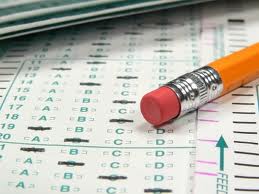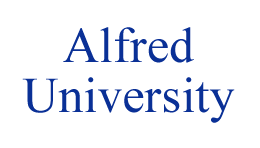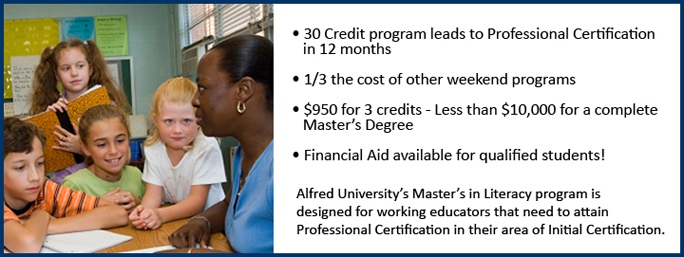Test Taking Tips for the Literacy CST
12 Test Taking Tips for the Literacy CST
- Before taking your test be sure to eat foods that will aid in your success. Foods such as milk, nuts, seeds, rice and oats help your study efforts by releasing natural study enhancers called CCKs (cholesystokinin). All of these chemicals enhance the neurotransmitters associated with memory.
- Read carefully and look for key words such as “all of the following EXCEPT.”
- Be sure to read (not answer) the essay questions BEFORE beginning the multiple choice portion of the exam. This will allow you an opportunity to underline, circle, highlight or notate any information that may lend itself to a more successful essay. These key words and literacy phrases help you to score points on your essay. They can be found throughout the entire multiple choice section. Learning to take clear, coherent notes as you navigate throughout the multiple choice questions will help to keep your thoughts focused on the essay question being asked.

- After reading a multiple choice question, try to come up with a meaningful answer BEFORE allowing yourself to look at the choices presented. This will help to ensure that you are not being influenced by too many familiar choices, before having an opportunity to think about what you already know to be correct (i.e. cover the choices with your hand or the answer document).
- Keep in mind that this is a test designed to assess your knowledge on Balanced Literacy. The authors of this test are advocates of Balanced Literacy and firmly believe in its philosophies. Remembering that this is a literacy test will help you to avoid any answer that is not geared toward testing your grasp on the teaching of literacy. In other words, avoid answers where a “math activity” or “science activity” is a choice. On this exam, though it can be a possibility, I have never seen an answer that wasn’t geared toward literacy actually be the correct answer. Personally, as soon as I see the word “math”, I know it is not the correct answer. This is a case where I am only using my experience. This is not something I have read anywhere, but I would not hesitate to suggest that you follow this advice.

- When answering ‘scenario’ type questions, please keep in mind that every single piece of information given in the question is there for a reason. Avoid overlooking anything that may seem insignificant. For example, a question may mention that a small child has just entered school from a low-income family, living in the local housing projects. This information is included to prompt you to think about what current research tells us. Research shows that children from lower-income families raised in housing projects tend to have less prior knowledge, just as children from ELL families, at the early grade level, tend to have less of an oral story telling background. So again, every word of information was included for a reason. Carefully consider why such information may have been included as you peruse the choices.
- Follow your instincts when choosing an answer. Don’t over-analyze. Though it is possible that you may be dealing with a “trick question”, it has been my personal experience that the writers of this test are rarely trying to trick you. They are simply trying to assess what you know, or still need to learn.
- Another trend I have noticed personally (though this may not be written anywhere officially) – I have never seen “NONE OF THE ABOVE” be the correct answer. As I have mentioned, this is only something I have noticed when studying trends. Though you must keep in mind that it is a possible answer, if I were taking this test I would consider all other possibilities before choosing “NONE OF THE ABOVE.”
- On the contrary, “ALL OF THE ABOVE” has often been a very popular CORRECT choice throughout my trend study, so please be aware of the difference.

- When you are ready to begin your essay question:
- Read it once with an open mind as to what the task at hand may be.
- Now, read each and every sentence with the expectation that you are now looking for hidden tasks. For example, an essay may state, “Mrs. M. explained to her replacement teacher that she will be taking home all of her books and materials.” It is here that you found one of your tasks – How will you, the replacement teacher, fill the room with books and materials?
- These tasks are written throughout the entire essay, sometimes as one large task, covering many components, and sometimes as many smaller tasks written throughout the essay. Unfortunately, and as challenging as it may be, it will be your job to identify all of these tasks based on the information provided.
11. As you read your essay question, simply underline anything that may sound like a task for the new teacher, meaning, a task for you as the essay writer. Convert these tasks into questions and use those questions to create an outline.
12. Finally, my most important tip of all! Come to the CST Review on Sunday Jan. 26 and Sunday Feb. 2, and all of your questions will be answered clearly, in person.
I truly look forward to helping all of you pass this test. For those of you that are unable to attend, I wish you the best of luck. Please, please do not hesitate to email me, anytime, if you any questions at all.
Teresa Rao
poprao@aol.com
Bio: During her first year of teaching, Teresa Rao created a 7th and 8th grade Home and Career Skills Program for P.S. 95 in Brooklyn where she taught for 7 years in grades 7, 8, and 3. Teresa developed literacy activities while working on the Literacy Team in I.S. 127 Queens where she has been teaching grades K, 2, 5 and 6 until present day. Over the past few years Teresa has developed and instructed Balanced Literacy Workshops for CITE. She currently teaches 6th grade math at I.S. 127 and works as an instructor for CITE through Alfred University teaching and developing CST Review Courses in Literacy.
**** Our free “CST test taking tips” workshop is open to students in our Literacy Program, given in partnership with Alfred University. Teresa is an instructor in the Program. The Literacy Masters satisfies certification requirements for Permanent (Professional) Certification in NYC. Our students have a 99% pass rate on the CST.








